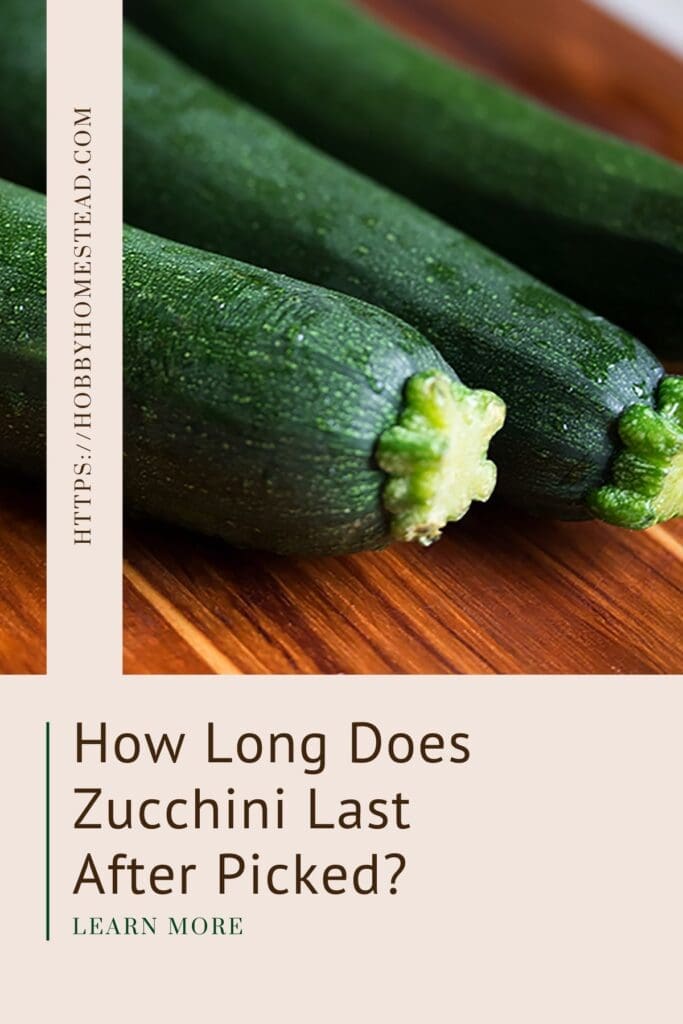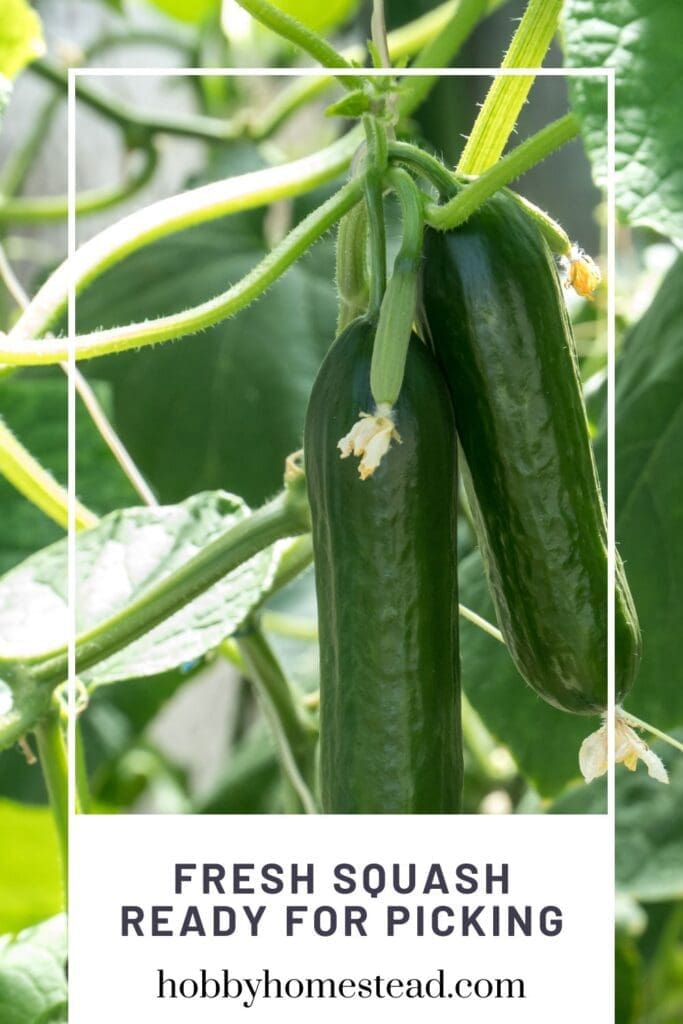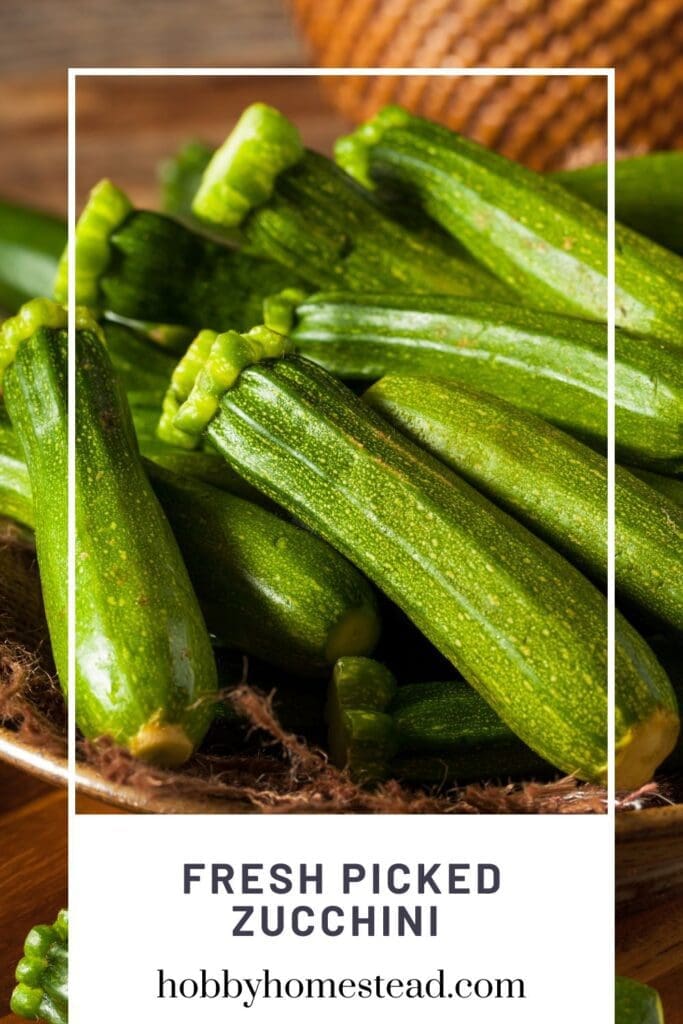How long does zucchini last? For homesteaders and backyard gardeners, harvesting fresh squash is one of the joys of the growing season.
However, zucchini plants are prolific producers. Often leaving you with an excessive amount of squash to enjoy throughout the summer.
To make the most of your harvest, it’s important to know how long it lasts after being picked and how to store it properly.
Whether you’re prepping for zucchini boats, zucchini fritters, or preserving your bounty for later use, this guide will help you extend the life of your squash.

How Long Does Zucchini Last After Picking?
Once it is harvested, it can last for about 1-2 weeks if stored correctly.
The key is to keep it in a cool, dry place or refrigerate it for longer shelf life.
A Homesteader’s Guide to Storing Fresh Zucchini
It has a high water content, which means it can become mushy or develop rotten spots if not handled properly. When left at room temperature, eat within a couple of days, especially in the heat of summer. For best results, store your freshly picked zucchini in the fridge.
Storing Freshly Picked Zucchini in the Fridge
For Small to Medium Size Squash, they will keep fresh for the longest time in the fridge. Place it in the crisper drawer of your refrigerator. Wrap in a paper towel to absorb any excess moisture and store it in a ventilated plastic bag or paper bag.
This allows air circulation while preventing the squash from getting too wet, which can cause spoilage. Storing it in the fridge can extend its life up to 2 weeks.
For larger zucchinis with large seeds, it’s best to use them sooner rather than later. Their skin is thicker and can become tough over time, and their texture may not hold up as well in long-term storage.

Freezing Zucchini for Later Use
Homesteaders often find themselves with more than they can eat during the peak zucchini season. Freezing is a great way to preserve your crop for the winter months. Here’s how to freeze squash the right way.
Blanching. Wash and slice it into thin slices or small pieces and blanch it in boiling water for 2-3 minutes.
Ice bath. After blanching, transfer to an ice bath. An ice bath is a large bowl of cold water with ice in it. It will stop the cooking process.
Dry and freeze. Pat dry with a paper towel. Place on a baking sheet in a single layer, and freeze until solid.
Store in freezer bags. Once frozen, transfer the pieces into freezer-safe bags or resealable bags. Remove as much air as possible to prevent freezer burn.
Frozen zucchini can last for up to a year in the freezer and is a great option for adding to pasta sauces, soups, or as an ingredient in zucchini recipes when the fresh crop is gone.
Why do you blanch the zucchini before freezing?
Blanching before freezing is important because it helps preserve the vegetable’s flavor, texture, and nutritional value. Here’s why.
Stops enzyme activity. Blanching halts the natural enzymes that cause vegetables to ripen and eventually decay. If zucchini is frozen without blanching, these enzymes can continue to break down the texture and flavor. Leading to mushy, discolored zucchini after thawing.
Preserves color and texture. The quick blanching process helps maintain the bright color and firm texture, ensuring it stays appealing when cooked later.
Reduces bacteria and dirt. Blanching also helps to clean the outer skin by killing bacteria or dirt that might remain after washing, making it safer for long-term storage.
In summary, blanching helps zucchini maintain its quality in the freezer, giving you the best results when you thaw and cook it later.
Canning and Dehydrating
For those who prefer more traditional preservation methods, canning or dehydrating squash is another way to store your crop for future use.
Shredded zucchini can be preserved by canning or dehydrating and used in baked goods like zucchini fritters or as an addition to stews and soups.
When dehydrating, be sure to slice into thin slices for faster and more even drying. Properly dried, it can last for several months when stored in an airtight container in a cool, dark place.

Tips for Homesteaders
Pick zucchini regularly. During the peak of the season, zucchini can grow rapidly. Check your plants daily and pick them when they’re around 6-8 inches long for the best zucchini in terms of taste and texture. Larger zucchini may develop large seeds and tougher skins.
Choose the right storage method. If you plan to use your zucchini within a few days, storing it in a cool, dry place at room temperature works fine. For longer storage, refrigerate or freeze it.
Avoid excess moisture. When storing in the fridge, make sure to dry the zucchini thoroughly and avoid trapping excess water in the storage bag.
Use ventilated storage. Storing zucchini in a ventilated plastic bag or paper bag helps maintain good air circulation, which can prevent early spoilage.
Preserve for later. Freezing and canning are two of the easiest ways to store zucchini for use after the growing season. These methods will help ensure you can still enjoy zucchini noodles and other zucchini dishes throughout the year.
How to Tell If Zucchini Is Going Bad
Over time, zucchini can lose its firmness and develop rotten spots or a mushy texture. If the skin becomes dull or soft, it’s time to use it up quickly or add it to the compost bin. If you see any of these or signs of mold, discard to prevent any contamination in your kitchen.
Fresh zucchini is a summer staple. Especially for homesteaders who grow their own food. With proper storage techniques like refrigeration or freezing, you can extend the shelf life of your zucchini and enjoy it long after the season ends.
Whether you prefer using it in fritters, soups, or shredding it for noodles, knowing how to store zucchini is the first step to making the most of your harvest.


